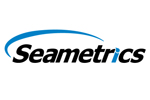Seametrics LevelSCOUT 2X Water Level Loggers
Features
- Increased memory to 100,000 records
- Integrated SDI-12 or Modbus RTU RS485 output
- 5-year battery life with user-replaceable batteries
- Free ground shipping
- Expedited repair and warranty service
- Lifetime technical support
- More
Overview
The Seametrics LevelSCOUT 2X Smart Sensor is an integrated datalogger and level/temperature sensor and is ideal for site assessments, tidal studies, environmental monitoring, surface water discharge measurement, and aquifer level monitoring, as well as aquifer storage and recovery. This sensor networks with all of the Seametrics Smart Sensor family.
Data Storage
This industry standard digital RS485 interface device records up to 100,000 records of level, temperature, and time data, operates with low power, and features easy-to-use software with powerful features. Constructed with 316 stainless steel, acetal, and fluoropolymer, this sensor provides highaccuracy readings in rugged and corrosive field conditions. The LevelSCOUT 2X with Seametrics’ Aqua4Plus 2.0 software or a different software/logging equipment can be used to read measurements via RS485 and/or SDI-12.
Design
The LevelSCOUT 2X is an absolute sensor, requiring no vent tubes, desiccant, or bellows. It can be paired with a BaroSCOUT 2X barometric sensor and used with the Aqua4Plus 2.0 Barometric Compensation Utility to adjust the LevelSCOUT 2X readings for current atmospheric pressure. A replaceable 2/3 AA 3.6v lithium battery powers the LevelSCOUT 2X. The unit is programmed using our easy-to-use control software. Once programmed the unit will measure and collect data at the time interval set.
In The News
From Paddles to Phytoplankton: Studying Vermont’s Wildest Lakes
For six months of the year, Rachel Cray, a third-year PhD student at the Vermont Limnology Laboratory at the University of Vermont, lives between a microscope and her laptop, running data. For the other six months, she is hiking and canoeing four of Vermont’s lakes, collecting bi-weekly water samples. Cray studies algal phenology across four lakes in Vermont, US, that have low anthropogenic stress—or in other words, are very remote. Funded by the National Science Foundation Career Award to Dr. Mindy Morales, the lakes Cray researches part of the Vermont Sentinel Lakes Program, which studies 13 lakes in the area and, in turn, feeds into the Regional Monitoring Network, which operates in the Northeast and Midwest US.
Read MoreReimagining Water Filtration: How Monitoring and Science Enhance FloWater Filtration Systems
Over 50% of Americans think their tap water is unsafe , according to the Environmental Working Group (EWG). Other recent surveys have found that number to be as high as 70% of persons surveyed. Whether due to increased public awareness of water quality issues or confusion about how municipal water sources are regulated, there is a clear distrust of tap water in the United States. According to industry expert Rich Razgaitis, CEO and co-founder of the water purification company FloWater, this issue creates a damaging cycle. Razgaitis explained that the health and environmental problems associated with contaminated water aren’t the only issues. As people become increasingly aware that some tap water is unsafe, they resort to bottled water.
Read MoreMonitoring New Hampshire’s Aquatic Ecosystems: Continuous Data Collection in the Lamprey River Watershed
New Hampshire’s aquatic ecosystems provide a range of ecosystem services to the state and region. Resources and services like clean water, carbon storage, climate regulation, nutrient regulation, and opportunities for recreation all depend on New Hampshire’s aquatic ecosystems remaining healthy. Jody Potter, an analytical instrumentation scientist at the University of New Hampshire (UNH), is studying these aquatic ecosystems in hopes of developing an improved understanding of ecosystem services and their interactions with climate change, climate variability, and land use changes. [caption id="attachment_39799" align="alignnone" width="940"] Aquatic sensors in the Merrimack River in Bedford, NH, with I-293 in the background.
Read More























